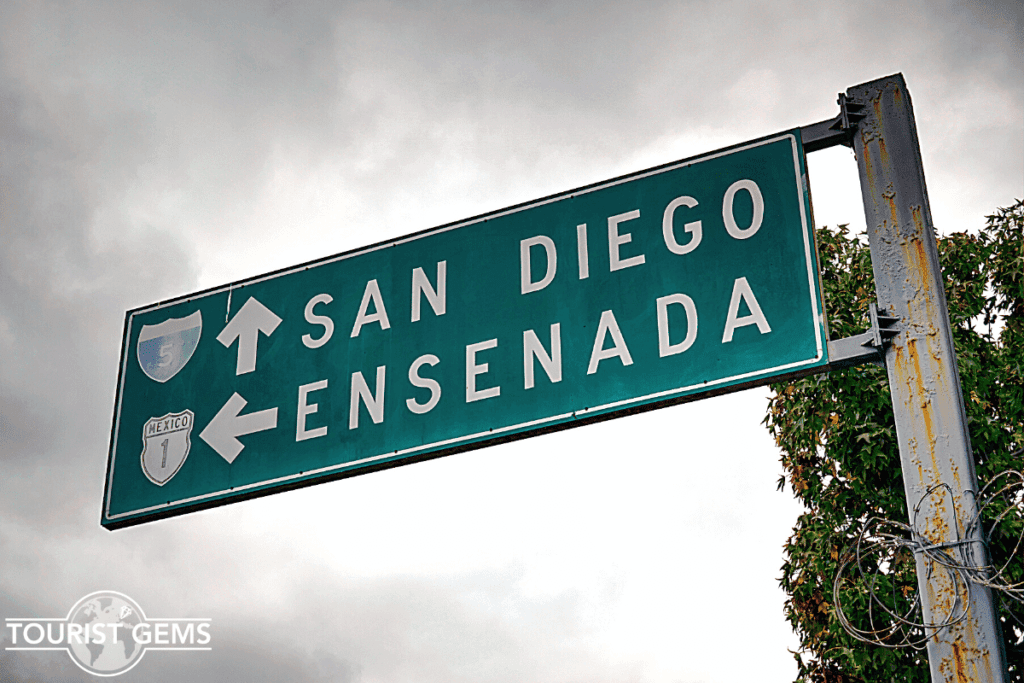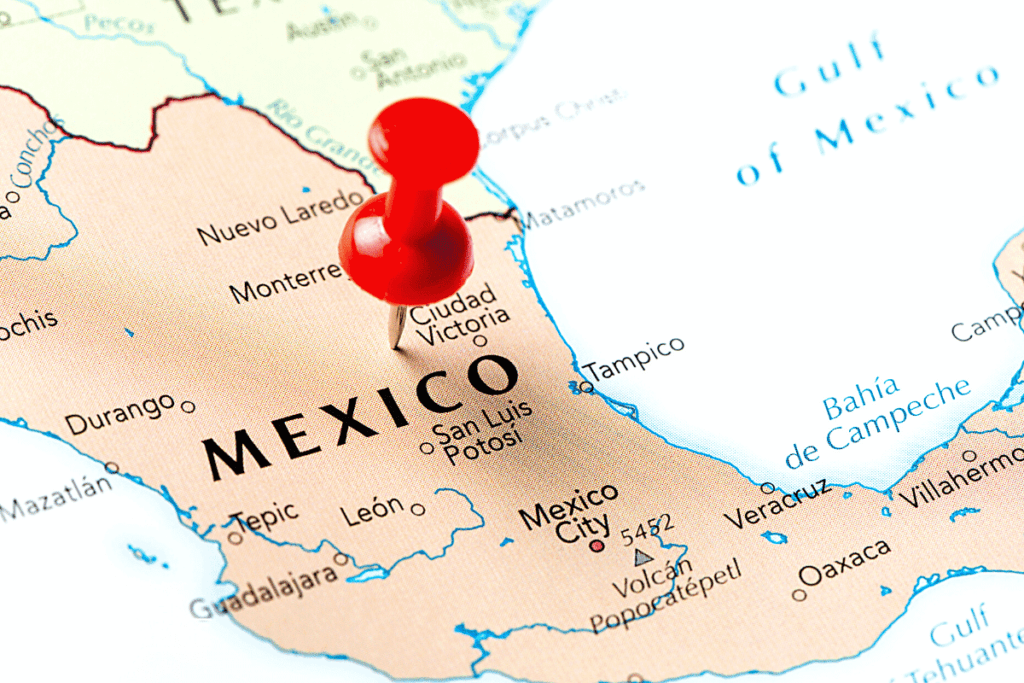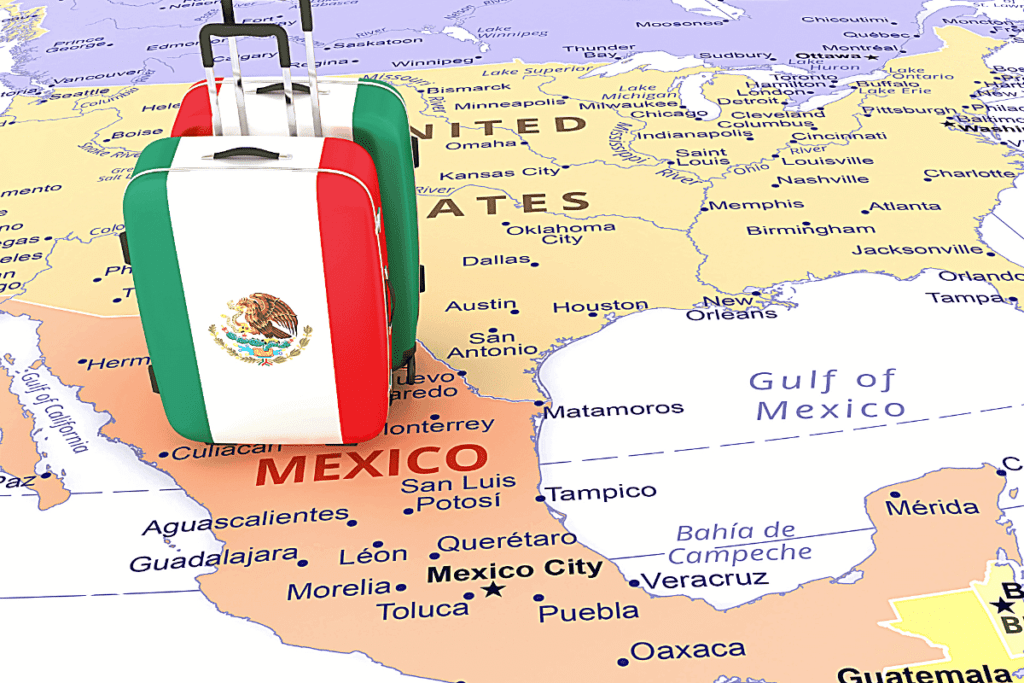Planning to visit south of the border? You’re probably wondering if is it safe to drive to Mexico, as there are numerous attractions and tourist destinations throughout the country. The answer isn’t a simple yes or no, as it’s crucial to do your research and stay informed of the various locations. Safety in Mexico can vary greatly depending on where you’re headed, as driving in Mexico isn’t like driving in the U.S. The rules of the road, the signage, and even the driving culture can be quite different. With the right knowledge and precautions, your Mexican road trip can be a thrilling adventure.
Planning Your Trip to Mexico
Embarking on a road trip to Mexico can be a thrilling experience. It’s an opportunity to explore a diverse landscape, savor the unique culinary delights, and immerse yourself in cultural festivities. However, your journey needs a foundation of careful planning and knowledge. This section will guide you on how to successfully plan your Mexican road trip adventure.
Researching Safety Concerns
When planning any trip, safety should be your top priority. This is especially critical for a road trip to Mexico due to the variable safety conditions in different regions. The U.S. Department of State frequently updates travel advisories, providing critical insights on the current safety levels across Mexico.
You can use this information to:
- Plan your route wisely to avoid high-risk areas.
- Be aware of the prevailing security concerns in regions you want to visit
- Understand the precautions to take in each area.
One of the many resources available for accurate information is the U.S. Embassy in Mexico website, which provides timely alerts and safety tips for tourists. Regularly checking these updates will give you the most accurate information, ensuring you’re making informed decisions about your travel plans.
Don’t forget that safety isn’t just about the destination you’re heading to, but also about ensuring you’re comfortable with long hours on the road, you’re adept at handling different weather conditions, and your familiarity with another culture.
Understanding Mexico’s Road Conditions

Unlike the U.S., driving in Mexico can be a unique experience due to differing road conditions and rules. It’s crucial to familiarize yourself with these differences to ensure a safe and enjoyable journey.
Various Mexico road types include:
- The ‘Cuota’ roads which are toll roads.
- The ‘Libre’ roads that are free.
While ‘Cuota’ roads are generally well-maintained, do expect to encounter potholes, missing signage, or even livestock when using ‘Libre’ roads. Understanding what type of road you’re on and adapting to its characteristics is key.
Mexican road signs are mostly universal, but some may be confusing. It’s worthwhile to study Spanish road signs before your journey begins. Additionally, it’s valuable to know that right turns on red lights are generally illegal in Mexico unless otherwise indicated.
Driving regulations can differ from region to region, so ensure you’re getting localized information. For instance, car seat laws and fines for speeding can vary widely.
Remember that not all the information you need will be found on a webpage. Join Mexico-related travel forums or social media groups where you can ask specific questions or share insights with other travelers might be one of the most resourceful ways of getting practical and recent information.
By incorporating these factors into your preparation, you’re well on your way to an adventure-filled road trip to Mexico.
What is The Safest Route to Drive through Mexico?

Planning the safest route for your road trip through Mexico is paramount to your security. This task is a lot easier when you’ve got the best resources at your disposal, but your route will depend on your destination.
Your plan should include every single detail: what roads you will be traveling on, where you will stay along the way, and good knowledge of the areas you should be passing through.
It’s important to check the latest travel advisories from reputable sources such as the U.S. Department of State as they provide updated information on areas to avoid due to crime or other safety concerns.
Is it Safe to Drive in Mexico with US Plates?
The short answer is, yes. However, it’s not without risks that can be minimized with some foresight. US-plated vehicles tend to attract attention in Mexico, both from local law enforcement and those with less-than-honorable intentions.
It is vital to be aware of the possible risks and take measures to protect yourself and your vehicle. Always secure your vehicle, keep valuable items out of sight, and park in well-lighted and secured parking areas where possible.
Another important thing to remember is that, in Mexico, foreign-plated vehicles need to acquire a temporary import permit, except in the Baja Peninsula and most of Sonora. This permit can be purchased at the border, in Banjercito offices, or online before you travel.
By taking these steps, you’ll not only secure your vehicle but you’ll also be well on your way to ensuring a safe and enjoyable journey. It is also important to carry a small amount of pesos on you, as most driving violations can be paid for on the spot if you were to meet with law enforcement.
What Documents Do I Need to Travel to Mexico By Car?

Understanding the documentation required for a road trip across borders is crucial to ensure a hassle-free experience. It’s not unheard of to occasionally be asked to showcase these documents at the various military checkpoints, especially in border regions and areas of major tourist activity. This section aims to help you navigate the list of necessary documents when traveling to Mexico by car.
- Passport or Passport Card: A valid passport or passport card is required for entry into Mexico and return to the United States.
- Tourist Card (FMM – Forma Migratoria Múltiple): This document is necessary for tourist travel within Mexico beyond the border zone (typically up to 20-30 kilometers from the border) and for stays longer than 72 hours. It can be obtained at Mexican consulates, border crossings, and airports within the border zone.
- Vehicle Registration: Carry the original or a copy of your vehicle registration. It should be in the name of the driver or have a letter of permission from the owner if the vehicle is not owned by the driver.
- Mexican Auto Insurance: U.S. auto insurance is not valid in Mexico, so you must purchase Mexican auto insurance before your trip. This can be done online, at the border, or through various agencies that specialize in international travel.
- Driver’s License: Your valid driver’s license from your home country is required to drive in Mexico. Mexican authorities will recognize and accept it.
- Vehicle Import Permit (if applicable): If you plan to drive beyond the free zone (which includes areas like Baja California & parts of Sonora), you need a temporary vehicle import permit, which can be obtained online or at certain border crossings. The free zone typically does not require this permit.
Driving Tips for a Safe Journey
Safety first — a motto that plays a critical role when planning a road trip, particularly to Mexico. Here, we delve into some pointers to help you navigate your drive with confidence and take pleasure in every mile.
Familiarize Yourself with Local Driving Laws
Diving into the local driving laws is the first rule of thumb when you’re planning to hit the road in any foreign country. Let’s unpack the ones relevant to Mexico for your convenience.
- A critical rule you’d want to remember is the “no right on red” law. Unlike many places in the US, you’re not allowed to make a right turn at a red light in Mexico, even when the road is clear.
- Take note of speed limits. They’re usually posted in kilometers per hour. Better safe than sorry, as exceeding speed limits might cost you a fine.
- Seat belts are mandatory for all occupants of the vehicle. Not only it’s a law, but it’s also your first line of defense in case of an accident.
- Never, ever drink and drive. Mexico has stern laws against drunk driving. If you’re caught, you could face stiff penalties or even jail time.
Avoiding Driving at Night
Although driving at night might seem tempting with its traffic-free roads and cool breezes, it’s not recommended due to safety considerations. Why should you avoid it? First, the road conditions can be unpredictable. Potholes and sudden turns are difficult to spot in the dark, increasing the chances of accidents.
Next, under the cover of darkness, it becomes easier for criminals to prey on unsuspecting victims. While these situations aren’t common, they are more common at night.
Finally, outside metropolitan areas, roadside assistance might be limited or even absent at nightfall. A sudden breakdown could leave you stranded for hours, turning your trip into an unintended adventure or nightmare, depending on how you view it.
Do You Know The Language?

When planning a road trip through Mexico, having a basic understanding of Spanish is not just beneficial; it’s essential for a smooth journey. Here’s why knowing the language can significantly enhance your travel experience:
Navigation and Directions
Road signs, instructions, and place names in Mexico are predominantly in Spanish. While major tourist areas might have bilingual signage, this is less common in rural or less-touristed regions. Knowing Spanish enables you to navigate more effectively, understand traffic rules, and find your way around without relying solely on GPS, which might not always be accurate or available.
Interaction with Locals
Spanish is the national language of Mexico, and while you may encounter English speakers in popular tourist destinations, many Mexicans, especially in less commercialized areas, speak little to no English. Communicating in Spanish allows for more meaningful interactions with locals, from asking for recommendations to understanding cultural nuances. It helps in building rapport and can greatly enhance your travel experience by facilitating genuine connections
Emergency Situations
In case of emergencies or unforeseen circumstances, such as needing medical attention, dealing with car trouble, or seeking help from authorities, fluency in Spanish is invaluable. Being able to communicate clearly and directly can expedite assistance and resolution, reducing stress and confusion in potentially challenging situations.
Cultural Immersion and Respect
Speaking the local language demonstrates respect for and interest in the culture. It allows for a deeper understanding of Mexico’s rich heritage, traditions, and customs. Engaging in simple conversations, reading local literature, or understanding media in Spanish can provide insights into the country’s social and cultural dynamics, enriching your travel experience.
Everyday Transactions
From negotiating prices in markets to ordering food in restaurants, understanding menus, and handling accommodations, basic Spanish skills make daily transactions smoother and more enjoyable. It also empowers you to ensure fair dealings, comprehend menus and signages, and fully appreciate the local cuisine and hospitality.
A Tourist Gem Recap
Traveling safely through Mexico by car requires careful planning, preparing yourself to speak basic Spanish and consideration of current travel advisories and road conditions. Here are some general tips for finding the safest routes:
Stick to Toll Roads (Cuotas): Toll roads in Mexico are generally in better condition and have more security than free roads (libres). They are the preferred choice for long-distance travel within the country.
Daytime Travel: Avoid driving at night. Not only are hazards like animals and pedestrians easier to see during the day, but most crime, including highway robbery, occurs after dark.
Use Main Highways and Avoid Remote Areas: Stick to well-traveled highways and avoid taking shortcuts through unfamiliar or remote areas.
Stay Informed: Check the latest travel advisories from reputable sources such as the U.S. Department of State or the Canadian government. They provide updated information on areas to avoid due to crime or other safety concerns.
Plan Your Route: Before you travel, map out your route and plan your stops. Use GPS and road maps to stay on course.
Keep In Touch: Let someone know your travel itinerary and check in regularly. Make sure that your phone service provider is prepared to assist you with a plan that will allow you to make calls throughout Mexico.
Specific routes can vary in safety, and it’s important to research and plan based on the most current information. Major routes like the highways connecting Mexico City to Acapulco, Guadalajara, Monterrey, and Cancún are generally considered safe, especially if you stick to the toll roads and travel during the day. However, the situation can change, so it’s crucial to stay updated on the current conditions and advisories.
